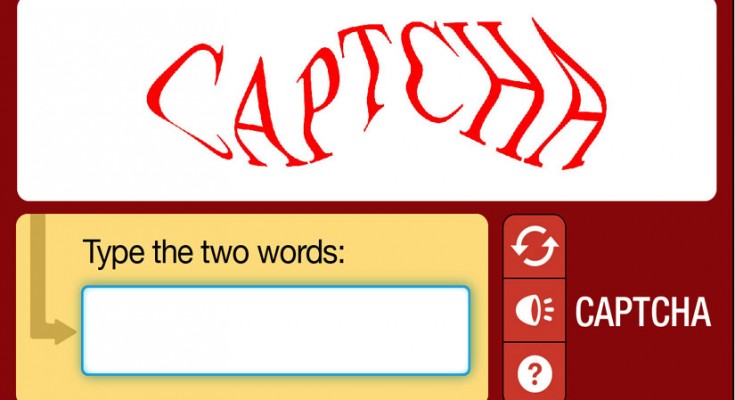The internet is a ubiquitous part of everyday life with people using it for work, play, and everything in-between. But for every helpful use of modern computers’ superior speed and performance, there is also a way for malicious hackers to counteract traditional security measures. This becomes a considerable issue as the internet expands in terms of users and devices, providing unprecedented access to the world around us on both sides of the issue. As a result, computer scientists have begun to develop security technology that imitates human intuition in order to protect its users more effectively.
Introduction
Web security is a widespread topic of concern for businesses and individuals alike. In 2014 alone, more than 500 million financial records were accessed illegally [1], and, with stories like Edward Snowden’s, in which he released upwards of 1.7 million documents filled with information gathered by the NSA about the general public [2], security is garnering much more attention. The web has numerous security measures that even the most casual of users have likely seen, and these measures are not quite as complicated as they may seem. However, for many users, the often esoteric and highly technical discussion of this matter makes a fundamental understanding unattainable, making it difficult to prevent exploits of these security measures.
What are computers even good for?
Unsurprisingly, computers are very good at doing tasks that take in specific user inputs, but they are unable to use intuition in order to aid human decision-making. If people want to use their phones, which are basically just small computers, as calculators, they will return the right answer every time. If they ask Siri where to go to get the little black things that screw onto valve of bike tires, though, they are probably out of luck. However, a fellow human being would likely be much better at understanding what is being asked, but not as accurate with calculations. There is a very good reason for this, and it lies at the heart of what it means to be human and what it means to be a computer.
Human brains function in “parallel” while computers function in “series”[6]. In short, humans can process a lot of information at the same time. For instance, in each human eye, millions of little rods and cones each pick up a little bit of light and send it back to your brain, which processes it all at once to create an image of what you see in front of you. At the center of a computer, however, is not a brain but a processor. A processor can only do one thing at a time. To make up for this, however, it moves extremely fast, performing upwards of 4 billion calculations per second. To illustrate, if every calculation took a second, it would take 126 years for the processor to do what it currently does in 1 “real” second. This makes adding 1 billion numbers incredibly quick. However, in order to bring the image seen on a screen, it has to go to each pixel individually and tell it what color to render. For a 1080p screen, that’s over 2 million pixels that the computer has to visit individually and set. Compare that to the human brain, which can do the same task all at once. In short, humans are good at using intuition, understanding language, and identifying very complex patterns, while computers can move extremely quickly and extremely precisely. Understanding that overarching difference, the conversation about security becomes much more interesting.
CAPTCHA
One issue of security is that robots or programs are able to interact with the Internet as if they were human users. For example, a program could make as many emails as possible and spam a set of users. Based on the numbers seen earlier, it is not unthinkable for a computer to quickly fill an inbox with over one million emails from one million different email accounts. Couple that with a robot that searches the Internet for email accounts, and the situation could quickly get out of hand.
To prevent this, there is a common countermeasure called a CAPTCHA, an acronym for “Completely Automated Public Turing test to tell Computers and Humans Apart”[3]. An example is portrayed in Fig. 1. The “Turing test” component of this acronym is the important part. A Turing test, named after the pioneering computer scientist Alan Turing, is a test used against an entity to determine whether it is a robot or a human. While this may sound complicated, these tests are quite brief and easy to take. Signing up for an email account in the last five years has likely involved solving one to complete the process and it probably looked something like this:[3]
While usually easy for humans to solve, this can be an unexpectedly difficult challenge to model for computer scientists developing programs. Humans can see the image in whole, use their natural ability to recognize any relevant patterns or text, and give the answer. On the other hand, a computer can only look at one pixel at a time, forcing it to go back and forth and attempt to decipher any patterns that may exist. Interestingly, with the advent of artificial intelligence, computers have begun to be able to mimic humans brains in this regard, and these image-based CAPTCHA programs are not working as well as they used to.
A New CAPTCHA System
To combat this, in late December of 2014, a new type of CAPTCHA was developed, called the “no CAPTCHA reCAPTCHA.” Shown in Fig. 2, This new technology uses software that tracks what is done before, during, and after engagement with the CAPTCHA to decide if the user is human or not [4]. As a result, instead of having to decipher distorted text, the user only has to check a checkbox confirming that they are, in fact, human.[4]
How is this done? While the code is under wraps still, one can imagine a robot, unless told otherwise, would likely fill out a form in thousandths of a second, while it would take a human a minute or two. Using this information, it would be fairly easy to decide whether a user filling out a form is human or not. While undoubtedly much more robust that this simple example, the “no CAPTCHA reCAPTCHA” likely operates along similar lines. This is only one form of security against the multifaceted world of security however.
Brute Force Hacking and Preventive Measures
Spamming accounts and forms, however, are not the only security risks on the Internet. Guessing passwords is a common and considerable threat to online security as well. While a human at a keyboard would take years to guess every word before correctly guessing someone else’s password, a computer can run through millions of words in a minute. Suddenly, trying every word in the dictionary is a trivial task. If a password is an actual word, odds are the computer will guess the correct password very quickly. This method is called “brute forcing” a password, and there are a couple interesting ways to combat it.
The first counteractive measure is one that often annoys many users: password requirements. Having length requirements, along with capitalized letters and numbers, makes guessing a password much more difficult. For example, requiring that a password be twice as long, assuming it is all lower case letters, makes the number of possible guesses go from 11.8 million to 141 trillion, which is 11.8 million times more difficult. If numbers and uppercase letters are included as well, there are 839 quadrillion possibilities, equivalent to 839,000 trillion different combinations of possible passwords. All of a sudden, what previously took a minute would now take 134,000 years if the computer was going at the same rate.
Even then, however, some users still are not protected and some attackers are very persistent. To deal with this, a limit can be placed to how quickly passwords can be tried. For example, there may be a limit to trying one password every five seconds, which to a human would likely make no difference at all, but to a computer suddenly makes the possible seem impossible. If the above example is used of five all lowercase letters as a password, what may have taken a minute would now take almost twelve and a half days. Extend this five second rule to ten characters, upper and lower case letters, as well as numbers, and the password may not be cracked until the universe is ten times as old as it is now. Not a bad solution, but there is still one more common tactic that can be implemented to deter intrusions.
An easy and somewhat effective way to prevent intrusions is to have a maximum amount of attempts a user can make before no more attempts can be made. A variation to this, that Apple has implemented on their iPhones, are timeouts. The first three attempts can be done instantly. For every wrong attempt made after that, the user has to wait a longer and longer period of time before another attempt can be made [7]. This is a relatively effective mechanism as valid users will almost always be able to guess their passwords in a few attempts, but a computer has a very low chance to do the same, unless the password is known beforehand. After a few wrong guesses, the robot would have no way to continue attempting except to wait. The only caveat to this, however, is that some humans are not valid users in reality. For example, friends trying to guess a password on a user’s phone have been known to lock the phone, sometimes for days at a time. At this point, even the true owner cannot regain access to the phone without special intervention by the manufacturer. In the case of a website, users are often forced to reset their password. This may be an innocuous request at first, but eventually the user will have to do it so often that they won’t be able to remember their password at all, likely leading to other security flaws.
Conclusion
The gap between the abilities of humans and computers is both tremendous and useful. By creatively leveraging these inherent traits, much more secure environments can be created with little to no noticeable difference to users. However, these examples are just a few in a sea of possibilities. There can be malicious code embedded in emails, malicious code embedded in a web page, and simply browsing the internet over an unsecured connection can allow a malicious third party to see anything and everything a user does. As computers become more and more advanced and humans become more wary and tech-savvy, the environment must change and adapt. However, any security professional will say that the greatest threat to security is not web browsers, web sites, emails or extremely complex programs. By far, the greatest threat to security are humans themselves [5]. Whether it is writing down passwords on a sticky note as a reminder that the rest of the world can also see, or a receptionist simply lets someone in because they are dressed like a technician, time and time again, despite efforts in digital security, it is humans that have to be educated to truly protect what we want protected.






